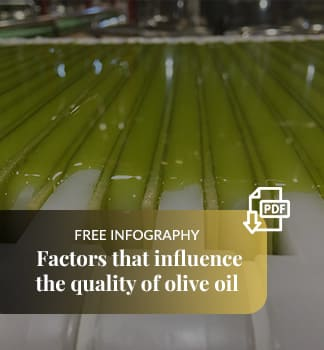The germplasm bank is an invaluable genetic reserve that seeks to safeguard the biodiversity of these important agricultural species.
These banks play an essential role in conserving native varieties and improving the olive industry worldwide.
Throughout this article, we will explore the locations of some of these banks, the number of registered varieties they house, their primary function, and the importance of their existence.
Location and Number of Registered Varieties
Olive and olive germplasm banks are scattered worldwide, in different countries and regions. Some of the most notable ones include:
-
University of Córdoba Olive and Olive Germplasm Bank (Spain): This bank houses one of the largest collections of olive and olive germplasm in the world, with over 1000 registered varieties.
-
University of California, Davis Olive and Olive Germplasm Bank (USA): This bank has an extensive collection of olive and olive varieties adapted to different conditions, with over 400 genotypes.
-
National Institute for Agricultural and Food Research and Technology Olive and Olive Germplasm Bank (Spain): Known for its genetic diversity, this bank houses around 300 varieties.
Functions and Work Carried Out
Germplasm banks have various essential functions:
-
Conservation of Biodiversity: The main function is to conserve and preserve the various varieties of olives, many of which may be endangered due to factors such as urbanization, climate change, and habitat degradation.
-
Research and Genetic Improvement: These banks provide an invaluable resource for scientists and genetic improvers, allowing research and development of new varieties that are disease-resistant, more productive, and adapted to different climatic and soil conditions.
-
Support for the Olive Industry: By providing access to a wide genetic diversity, germplasm banks contribute to the improvement of the quality and variety of products derived from olives, such as olive oil.
Importance and Establishment of Germplasm Banks
Germplasm banks were created with the purpose of preserving the rich genetic diversity of these species and ensuring their availability for future generations. They also play a crucial role in maintaining global food security and the sustainability of the olive industry in a context of environmental change and increasing demand.
Germplasm banks represent a fundamental effort in the conservation of biodiversity and in boosting the global olive industry. Their work not only ensures the survival of valuable genetic varieties but also contributes to the research and development of new cultivars adapted to current and future challenges.
The olive and olive germplasm bank, in addition to its primary function of conserving biodiversity, offers a series of tangible benefits for agricultural producers.
-
Access to Exceptional Varieties: The banks house a wide range of olive and olive varieties, some of which may have unique characteristics such as disease resistance, high productivity, or adaptation to specific growing conditions. Producers can access these varieties to diversify their crops and improve the quality and quantity of their production.
-
Development of Improved Cultivars: Germplasm banks provide agricultural producers and genetic improvers with the necessary raw material to develop new varieties of olives that are more resistant to pests and diseases, have greater adaptability, and offer improved organoleptic characteristics. This can lead to obtaining more robust and productive crops.
-
Increased Resilience: Given climate change and environmental challenges, producers can leverage the germplasm stored in the banks to find varieties that are more resistant to extreme conditions, such as droughts or high temperatures, thereby increasing the resilience of their crops.
-
Improvement of the Quality and Diversity of the Final Product: By using olive and olive varieties from germplasm banks, producers can improve the quality of olive oil and other derived products, meeting the changing demands of the market and diversifying their offerings.
Olive and olive germplasm banks can be both public and private
-
Public Banks: Many germplasm banks are publicly owned and managed by academic, governmental, or research institutions. These banks are designed to serve the public interest and provide access to genetic varieties to a wide range of users, including producers.
-
Private Banks: Some private companies also establish germplasm banks with the aim of preserving and exploiting unique genotypes for their exclusive use. These banks may have access restrictions and be oriented towards commercial purposes. They typically have a lower amount of genetic diversity.
Therefore, germplasm banks not only have a positive impact on the preservation of biodiversity but also provide valuable services to agricultural producers. By providing access to a wide variety of genotypes, these banks contribute to the development of more resilient, productive, and high-quality crops, thereby strengthening the olive industry and ensuring its sustainability in a constantly changing world.
Stay informed about olive oil trends to adapt to market changes and capitalize on opportunities.
.png)





